What are blood glucose curves?
The amount of blood glucose in our body is constantly changing and fluctuating. Typically, our blood glucose levels are at their lowest in the mornings before we have breakfast, and at our highest just after eating a meal, particularly if that meal is high in carbohydrates. We also experience higher blood glucose levels when we exercise, or when we feel stressed.
A blood glucose "curve" is the line we can draw on a graph to show the rise or fall in our blood glucose levels as a result of food, stress, intense exercise, or sleep.
Where are the blood glucose standard values?
Ideally, we should always be trying to keep our blood glucose levels firmly within a healthy range of 80-110 mg/dl.
If our blood glucose levels rise sharply above this range, then we are experiencing a glucose spike.

What is a glucose spike?
A glucose spike is when your blood glucose levels rise, typically after eating a meal, exercising or experiencing stress. Generally speaking, rising blood glucose levels are a natural and temporary part of your blood glucose curve. However, if you experience several spikes per day, and if those spikes, in turn, tend to be significantly above your healthy range, then you run the risk of having unhealthy, unstable blood glucose levels.
Frequent and consistently high blood glucose spikes will increase the amount of time your body spends in a hyperglycemic state, which increases oxidative stress, the glycation (the process by which sugar attaches itself to proteins or lipids) of important proteins and lipids in your body, and inflammation.
In this state (hyperglycemia), your body will release more insulin into your bloodstream, which can further increase glucose absorption from the blood into the cells. Over time, increased amounts of insulin can make your cells less sensitive to it. This means that you will react less efficiently to insulin, and the uptake of blood glucose to the cells will happen more slowly.
Slowing down the process by which your body absorbs glucose can lead to elevated glucose levels. This causes a number of undesirable mental and physical effects and even the development of very serious and potentially fatal health conditions in the long term.
What happens to my body when a spike or drop occurs?
In the short term, blood glucose spikes are associated with fatigue, brain fog, mood swings, and excess hunger.
Taking in too much glucose in a short period of time could also overpower your pancreas due to the excess insulin release required to combat it, which will cause reactive hypoglycemia. This is when your blood glucose levels drop after a spike to below your desired range, causing increased food cravings which will make you snack like crazy, and also mood swings.
Recurrent hypoglycemia will eventually decrease the efficiency of your body’s control mechanism to raise blood glucose levels to back up to the desired range, causing long-term metabolic dysfunction.

How can I feel a glucose spike?
Signs and symptoms of a rise in blood glucose:
- "Brain Fog"/Brain Fog: You have trouble concentrating or remembering anything.
- Fatigue: You feel so tired, even though you slept well and have had coffee that day
- Irritability: It feels like suddenly everyone around you just got 25% more stupid, even though they haven’t
- Cravings: You just ate but you don’t feel full, and are thinking about having a second dessert
What is the impact of glucose spikes on my body?
In the short term, glucose spikes will be something of an inconvenience. They will impede your ability to live your life as you wish, and mood swings may directly impact your work productivity and interpersonal relationships with friends, colleagues, and family. They will also interfere with your dieting plans, as having high glucose levels makes it harder to lose excess weight.
In the long term, having chronically high glucose levels can lead to metabolic dysfunction, faster aging, and reduced life expectancy through the development of potentially fatal diseases such as cancer.
How many spikes per day are normal?
Generally speaking, spikes are nothing to worry about as long as they’re not too steep and remain roughly within the desired range. It’s better to have fewer blood glucose spikes throughout the day rather than more, although it is impossible to completely avoid your blood glucose spiking after eating or exercising. Instead, you can take proactive and preemptive measures to ensure your blood glucose spikes remain within that desired range.
You can expect your blood glucose levels to increase after each meal. They will also increase sharply if you snack on any foods high in sugar in the middle of the day, such as a chocolate bar or piece of candy. Drinking alcohol will also cause your blood glucose levels to spike, especially if you are drinking sugary cocktails or carbohydrate-heavy beer. Straight spirits or white wine are the best way to manage glucose spikes if you do not wish to abstain from drinking alcohol altogether.
Intensive exercise will inevitably cause your blood glucose levels to spike, which is actually not a reason to be concerned. Physical exercise activates several mechanisms that make a glucose spike healthy, such as increasing insulin sensitivity. While exercising does put stress on the body, think of this as healthy stress.
Nevertheless, plan for that spike by saving your more vigorous workouts for the morning or earlier parts of the day, so that your blood glucose levels have settled down by the time you go to bed and do not interfere with your sleep pattern.

How can I control blood glucose spikes?
The hardest blood glucose spikes to control are the ones caused by stress. Unfortunately, your best options here are just to try and consistently get a good night’s sleep to give your body enough time to physically recover, and to practice mindfulness and meditation in order to offset any stress you may experience.
But now for the good news: food-related blood sugar spikes are much easier to manage!
Here are some points you should consider:
- Be smart about eating carbohydrates.
- Avoid products with added sugar, such as cakes or sweet pastries.
- Reach for whole grains instead of simple, white carbohydrates whenever you can.
- Opt for whole foods. Reach for whole fruits instead of juices or smoothies, and always combine them with healthy fats and proteins.
- Be sure to eat the right amount of food: Eating too much can also cause a rise in blood sugar.
- Eliminating added sugars reduces the amount of readily available glucose in your diet. It is well known that eating carbohydrates in combination with fiber, fats and proteins reduces the rise in blood glucose levels because they slow down the rate at which the body makes glucose available from food.
How to avoid food-related blood glucose spikes?
A key meal you can plan for to avoid a glucose spike is breakfast. Your breakfast should always be mainly savory, and never sweet to avoid that spike. However, this does not mean you should avoid fruit entirely. Try to have a slice of wholemeal bread with some cheese, avocado, or healthily cooked eggs, with a piece of fruit on the side. This will make your blood glucose curve increase very slowly, and help to ensure your blood glucose levels remain within the healthy range.
Avoid blood sugar spikes - here's what your healthy breakfast can look like:
- Slice of wholemeal bread
- Some cheese
- Avocado or an egg
- Small piece of fruit
Your blood sugar curve rises very slowly, and your blood sugar level remains in the healthy range.
In the mood for another food hack?
Drink some apple cider vinegar before a sumptuous meal. You can either mix it with some tap water and drink it or use it as a dressing over your green salad.
A 10- to 15-minute walk after eating also helps your body absorb excess glucose into the bloodstream more quickly, reducing the duration and severity of a food-induced blood sugar spike.
When should I worry or consult a doctor?
If you start monitoring your blood glucose levels and notice your levels first thing in the morning after sleeping and fasting all night are repeatedly above 100 mg/dl, this could be a sign that you have a more serious underlying condition such as pre-diabetes.
Equally, if you notice your blood glucose levels are repeatedly above 140 mg/dl as long as two hours after eating, that could also be a cause for concern.
In both cases, we recommend that you seek medical advice from your doctor who may be able to confirm or debunk your suspicions and guide you on how best to proceed.
Hyperglycemia and hypoglycemia: are blood glucose spikes and drops healthy?
Glucose spikes and drops are normal throughout the day. They can be caused by several lifestyle factors like nutrition, sleep, or exercise. If you feel symptoms like hunger, brain fog, or dizziness, this could mean that you are experiencing a spike. But don’t panic. There are ways to cope with and manage them.
The best way to get to know your body and understand what it needs is to start with continuous glucose monitoring. That way you can also get a feel for how well you can keep your levels in the ideal range and start to experience short and long-term health benefits.





